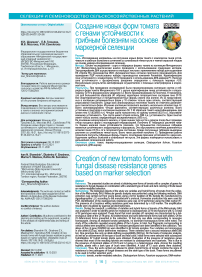Создание новых форм томата с генами устойчивости к грибным болезням на основе маркерной селекции
Автор: Шамшин Иван Николаевич, Грошева Екатерина Владимировна, Маслова Марина Витальевна, Самойлова Руфима Мамедхановна
Журнал: Овощи России @vegetables
Рубрика: Селекция и семеноводство сельскохозяйственных растений
Статья в выпуске: 6 (62), 2021 года.
Бесплатный доступ
Цель. Исследования направлены на получение новых форм томата с комплексом генов устойчивости к грибным болезням в сочетании со штамбовым типом куста и темной окраской плодов на основе маркер-опосредованной селекции. Методы. Объект исследований - сорта и гибридные формы томата из коллекции Мичуринского ГАУ. Молекулярно-генетический анализ проводили с использованием следующих методов. Экстрагирование ДНК осуществляли из молодых листьев с применением набора для выделения НК «Проба НК» производства ООО «Агродиагностика» согласно протоколу производителя. Для проведения ПЦР использованы наборы производства компании Fermentas. Идентификацию гена устойчивости к кладоспоризу Cf-19 проводили с использованием ДНК-маркера Р7. Наличие гена устойчивости к фузариозному увяданию определяли с помощью маркера I-2/5. Визуализацию результатов амплификации осуществляли с помощью электрофореза в агарозном геле. Результаты. При проведении исследований была проанализирована коллекция сортов и гибридных форм томата Мичуринского ГАУ с целью идентификации генов устойчивости к кладоспориозу Cf-19 и фузариозному увяданию I-2. Всего проанализировано 52 генотипа. Установлено, что для большинства образцов (41 образец) характерно гетерозиготное состояние гена Cf-19. Все индетерминантные и полудетерминантные формы имели оба аллеля. Из 23 представленных в коллекции детерминантных форм у 10 отмечен только один аллель, соответствующий рецессивной гомозиготе. Среди всех анализируемых генотипов томата не отмечено доминантных гомозиготных форм. Изучение коллекции позволило выявить нескольких аллелей гена I-2. Всего амплифицировано четыре фрагмента, соответствующих различным аллелям. Всего устойчивых генотипов в коллекции выделено 50. У 42 образцов томата идентифицированы два аллея гена I-2 (633/693 п.н). Четыре сорта гомозиготны по одному аллелю (633 п.н.), обуславливающему устойчивость. Три сорта имеют второй аллель (566 п.н.) устойчивости. Один генотип имеет только аллель определяющий восприимчивость (693 п.н.). На основании молекулярного анализа, а также оценки типа куста и окраски плода был проведен отбор исходных форм с последующей гибридизацией. Получено 67 гибридных растений томата. Оценка наличия генов устойчивости показала, что большинство полученных гибридов являются устойчивыми к кладоспориозу и фузариозу. Это обусловлено наличием доминантных аллелей генов Cf-19 и I-2 в гетерозиготном состоянии. Среди полученных гибридов выделены растения со штамбовым типом куста. Всего таких растений получено 13. Проведенная работа позволила получить гибридные формы томата, сочетающие признаки устойчивости к двум возбудителям грибных болезней и штамбовый тип куста. Эти формы планируется использовать в дальнейшей селекционной работе.
Томат, маркер-опосредованная селекция, днк-маркер
Короткий адрес: https://sciup.org/140290364
IDR: 140290364 | УДК: 635.64:631.524.86 | DOI: 10.18619/2072-9146-2021-6-16-21
Текст научной статьи Создание новых форм томата с генами устойчивости к грибным болезням на основе маркерной селекции
Г рибные болезнитоматаявляются одной из главных причин сниженияурожайности. Они наносят значительныйущерб, как в защищенном грунте, так и в открытом. Основным способом борьбы с возбудителями заболеваний остается обработкахими-ческими препаратами. Однако постоянное применение пестицидов индуцирует появление устойчивых к ним популяций вредных организмов [1, 2]. Кроме того, томат активно используется для диетического питания детей и взрослых. Это требует минимали-зации химической нагрузки [3]. Поэтому оптимальным вариантом является использование устойчивых сортов.
Одним из способов ускоренного создания высокопродуктивных форм томата с комплексом генов резистентности является маркерная селекция. Отбор растений непосред- ственно по анализу генома позволяет проводить пирамидирование генов в достаточно короткие сроки в сравнении с традиционными методами селекции.
Кладоспориоз томата – заболевание, вызываемое грибом Cladosporium fulvum . Он поражает листья томата, проникая через устьица. После заражения мицелий C. fulvum разрастается в клетках листа, и широко колонизирует межклеточные пространства. Через 10-14 дней конидии гриба прорастают на поверхность листовой пластины и способны к повторному заражению. Заболевание снижает интенсивность дыхания и приводит к гибели растения [4].
Во время колонизации листьев C. fulvum выделяет много низкомолекулярных белков в апопласт листа. Было показано, что некоторые изэтих белков функционируют какдетерминантыави-рулентности ( Avr ) конкретных генотипов томатов [5]. Наличие гена устойчивости Cf позволяет синтезировать белок способный распознавать различные продукты гена Avr , кодируемые возбудителем. Возникает гиперчувствительный ответ. В результате на месте инфицирования образуются типичные некротические пятна и дальнейший рост гиф прекращается [6].
С момента открытия гена Cf-1 в 1930 годах сообщалось о 24 идентифицированных генахустойчивости к кладоспориозутома-та [7]. Большинство из них локализованы на коротких плечах 1 и 6 хромосомы [8]. К настоящему времени наиболее изученными остаются гены Cf-2, Cf-4, Cf-4E, Cf-5 и Cf-9 . Они клонированы,для значительной части из них известна нуклеотидная структура и размер [6]. Исследователи объединяют гены Cf в два мультиген-ных семейства Hcr2s и Hcr9s . Гены Cf-4, Cf-4E, Cf-9 и Cf-9DC принадлежат к семейству генов Hcr9s [9, 6], тогда как гены Cf-2 и Cf-5 принадлежат к семейству Hcr2 [10, 11].
Идентифицировано и картировано еще несколько генов устойчивости к C. fulvum, которые активно используются в селекции томата. Так в локусе Hcr9s на хромосоме 1 выявлен ген Cf-10 . Доказана его роль в физиологической и транскрипционной регуляцииустойчивости к кладоспориозу [8]. Нахро-мосоме 8 установлено наличие еще одного гена Cf-12 . Растения томата с ним проявляют высокую степень устойчивости к возбудителю [12]. Ген Cf-19 , расположенный на хромосоме 1 является гомологом гена Cf-9 (Hcr9) и позволяет растению противостоять расам 1,2,4,5 C. fulvum . Данный ген является доминантным. На сегодняшний день не зарегистрировано поражений генотипов томата с геном Cf-19 [13].
Для идентификации Cf-19 разработан молекулярный маркер Р7. Он был успешно протестирован в селекционной работе и показал высокую эффективность. Авторы рекомендуют использовать его при маркер-опосредованном отборе [13].
Еще одним вредоносным заболеванием томата является фузариозное увядание. Его вызывает гриб Fusarium oxysporum f. sp. lycopersici (FOL). F. oxysporum проникает в растения обычно через микротрещины, возникающие при формировании боковых корней, или поранения, а также через корневые волоски.
Идентифицировано три расы возбудителей фузариоза [14]. Первая и вторая расы широко распространены по всему миру, а третья имеет ограниченное распространение в странах с жарким климатом [15]. В теплицах России преобладает раса 1 (90%), раса 2 встречается в 10% случаев заражения томата фузариозом [16].
В культурные сорта томата включены три гена устойчивости к болезни ( I, I-2, I-3 ), взятые из дикорастущих видов. Гены I и I-2 расположены на 11 хромосоме и получены от S. pimpinellifolium . Они придают устойчивость к расам 1 и 2 соответственно. Ген I-3 , локализованный на 7 хромосоме, впервые идентифицирован у вида S. pennellii . Он дает возможность противостоять расе 1-3 возбудителя [17].
Гены устойчивости к фузариозу вырабатывают белок, взаимодействующий с эффекторными белками генов Avr1, Avr2 и Avr3 F. oxysporum . Эти эффекторы представляют собой небольшие белки с дисульфидной связью, которые секретируются в ксилемный сок при заражении. При этом ген Avr3 срабатывает только тогда, когда гриб находится в контакте с живыми клетками растений. Взаимодействие генов томата и возбудителя заболевания приводит к иммунитету, индуцируемому эффектором (effector-triggered immunity ETI), что предотвращает быстрое заражение растения [18].
Наибольшее значение в селекции томата на устойчивость к фузариозу имеет ген I-2. Именно его наличие в генотипе дает резистентность у большинства современных сортов [19-22]. Для его идентификации и ускорения отбора новых форм проведен ряд работ по поиску молекулярных маркеров [23-25].
В нашей стране доля томатов, выращенных в открытом грунте, остается значительной. Поэтому риск потери урожая от грибных инфекций высокий. Целесообразным является переход на сорта с комплексом генов устойчивости. Создание таких генотипов возможно с использованием пирамидирования генов на основе молекулярного анализа. В представленной работе изложены исследования коллекции томата Мичуринского ГАУ с применением молекулярных маркеров генов устойчивости к кладос-пориозу и фузариозу, а также дальнейшие использование отобранных генисточников для получения новых форм томата для открытого грунта.
Материалы и методы
Работа выполнена на базе учебно-исследовательского тепличного комплекса и лаборатории молекулярно-генетического анализа плодовых растений Мичуринского ГАУ. Исходные формы и гибриды томата культивировались в торфо-почвенной смеси в емкостях объемом 7 литров в условиях поликарбонатного укрытия. Были проанализированы по одному растению каждого сорта. Листья отбирали из коллекционных образцов на стадии рассады до высадки на постоянное место. Отобранные растения использовали для последующей селекционной работы. Всего проанализировано 52 сорта томата из коллекции Мичуринского ГАУ. Два сорта были отобраны для гибридизации и получено гибридное потомство. Проанализировано с использованием молекулярных маркеров 67 гибридных растений.
ВыделениеДНК проводили из молодыхлистьев с использованием набора для экстрагирования нуклеиновых кислот «Проба НК» производства ООО «Агродиагностика» согласно протоколу.
Для оценки использованы молекулярные маркеры гена устойчивости к фузариозу (I-2) томата [24, 26]. Последовательность праймерных пар представлена в таблице 1.
Таблица 1. Нуклеотидная последовательность пар праймеров, используемых в работе Table 1. Nucleotide sequence of primer pairs used in operation
|
Название Name |
Прямая последовательность Forward sequence |
Обратная последовательность Reverse sequence |
|
Р7 |
AGTGCAGAAATGGGTTGTGTA |
CCGGAGATCAAGCTCAACCA |
|
I-2/5 |
CAAGGAACTGCGTCTGTCTG |
ATGAGCAATTTGTGGCCAGT |
Реакционная смесь для ПЦР со всеми праймерами объемом 15 мкл содержала: 20 нг ДНК, 1,5 мМ dNTP, 2,5 мМ MgSO4, 10 пМ каждого праймера, 1 ед. Taq-полимеразы и 10х стандартного ПЦР-буфера. Реакцию для обоих пар праймеров проводили в приборе SimpliAmp (Life Technology) по программе:
-
- для маркера P7 – 94°С – 4 мин, 35 циклов 94°С – 30 с, 60°С – 30 с, 72°С – 1 мин и финальная элонгация в течение 7 мин при 72°С;
-
- для маркера I-2/5 – 5 мин 94°С, 35 циклов 30 с 94°С, 30 с 55°С, 1 мин 72°С и финальная элонгация в течение 7 мин при 72°С.
Результаты амплификации разделялись путем электрофореза в 2% агарозном геле. После электрофореза гель анализировали в ультрафиолетовом свете с использованием трансиллюминатора.
Отбор исходных форм растений по признаку роста и окраске плодов томата осуществляли на основании визуальной оценки.
Результаты и обсуждения
Для создания новых генотипов томата была проанализирована коллекция сортов Мичуринского ГАУ по ряду признаков. Проведен отбор по наличию генов устойчивости к кладоспо-риозу и фузариозу. Кроме признака устойчивости исходные формы отбирали по силе роста (штамбовые формы) и окраске плодов (темная-красная или фиолетовая).
Отбор по наличию генов устойчивости проводили с использованием ДНК-маркеров. В результате проведенного анализа получены четкие воспроизводимые результаты.
Коллекция исходных форм томата Мичуринского ГАУ проанализирована с использованием маркера Р7 с целью идентификации гена устойчивости к кладоспориозу Cf-19 . Маркер является кодоминантным и позволяет выявить аллельное состояние гена. Для апробации маркера было проведено его тестирование на 345 гибридах томата F2, полученных от скрещивания двух контрастных форм [26]. Также данный маркер был успешно использован при анализе 964 линий томатов разных семеноводческих компаний Китая [27].
Эффективность работы данного маркера была нами ранее проверена и проведено сравнение с результатами искусственного заражения. Все контрольные образцы с маркером Р7 обладали устойчивостью [28].
В результате проведения реакции амплифицируется два фрагмента длинной 250 и 300 п.н. Первый фрагмент соответствует рецессивному аллелю, второй – доминантному [26]. Результаты проведенного анализа сортов томата представлены в таблице 2.
Исследование показало, что для большинства сортов и гибридов томата коллекции Мичуринского ГАУ (41 образец) характерно гетерозиготное состояние исследуемого гена. Можно отметить аллельное разнообразие гена Cf-19 у генотипов с различным типом куста. Все индетерминантные и полу-детерминантные формы имели оба аллеля. Из 23 представленных в коллекции детерминантных форм у 10 отмечен только один аллель, соответствующий рецессивной гомозиготе.
Среди всех анализируемых генотипов томата не отмечено доминантных гомозиготных форм. Вероятно, это объясняется отсутствием целенаправленного отбора по признаку устойчивости к кладоспориозу.
Наличие гена устойчивости к фузариозу I-2 проводили с использованием кодоминантного маркера I-2/5 . Данный маркер, как и Р7, рекомендован для маркерного отбора и широко используется при селекционной работе. Так маркер I-2/5 использован в оценке 10 линий томата турецкими селекционерами для дальнейшего пирамидирования генов устойчивости к фузариозу [21]. Исследователи института в Бейруте применяли его при анализе 40 исходных линий томата для идентификации гена I-2 . При исследовании было установлено наличие гена в 39 линиях [20]. 27 генотипов томата изучено с использованием маркера I-2/5 белорусскими исследователями для оценки исходного материала [23].
Изучение коллекции томата Мичуринского ГАУ позволило выявить нескольких аллелей гена I-2. Всего амплифицирова-но четыре фрагмента различного размера: 633 п. н. (аллель I-2 ), 566 п. н. (аллель I-2C ) – аллели устойчивости; 693 п. н. – аллель, определяющий восприимчивость [16]. Кроме того, был идентифицирован фрагмент размером 700 п.н., ранее не отмечавшийся исследователями. Результаты анализа отображены в таблице 2.
Всего устойчивых генотипов в коллекции идентифицировано 50. У 42 образцов томата идентифицированы два аллея гена I-2 (633/693 п.н). Четыре сорта Сибирский скороспелый, Микадо сибирико, Иван Купала и Зефир в шоколаде гомозиготны по аллелю I-2 (633 п.н.). У детерминантных сортов Каротинка, Рио-Гранде и индетерминантного сорта Итальянское спагетти амплифицирован фрагмент размером 566 п.н. (аллель I-2C ). При этом сорт Рио-Гранде является гомозиготной формой, а у сорта Итальянское спагетти в генотипе присутствуют оба аллеля, обуславливающие устойчивость. Один генотип имеет только аллель определяющий восприимчивость (693 п.н.).
-
У части исследуемых генотипов имеются дополнительные фрагменты. Так, у сортов Виват и Япончик выявлен фрагмент в 700 п.н. Возможно, что эти фрагменты являются дополнительными локусами гена I-2 и требуютдальнейшего изучения.
Из исследуемых генотипов томата были отобраны исходные формы для последующей гибридизации. Основной целью проводимой селекционной работы является создание сорта с комплексом генов устойчивости к грибным болезням, а также штамбовым типом куста и темной окраски плода. Штамбовые генотипы представлены в коллекции тремя сортами и одним гибридом F 1 (табл. 2). Наиболее перспективным является сорт Красавец селекции Мичуринского ГАУ. Он обладает компактным, в сравнении с остальными сортами коллекции, типом куста и хорошо зарекомендовал себя на протяжении ряда лет испытаний по ряду ценных признаков. В качестве генетического источника признака темной окраски плодов был выбран сорт Сибирский тигр (Siberian tiger). Оба отобранных генотипа устойчивы к фузариозному увяданию, что обусловлено присутствием гена I-2 в доминантном аллельном состоянии. Сорт Сибирский тигр так же обладает
Таблица 2. Результаты анализа исходных форм томата с использованием молекулярных маркеров Table 2. Results of analysis of initial tomato forms using molecular markers
От скрещивания сортов Красавец × Сибирский тигр получено 67 гибридных растений (F 1 ). Все растения были проанализированы на наличие генов Cf-19 и I-2 . Анализ показал присутствие двух аллелей гена устойчивости к кла-доспориозу ( Cf-19 ) у всех гибридных форм томата. По гену I-2 наблюдается разнообразие. У большинства исследуемых генотипов отмечены оба аллеля гена. Два растения гомозиготны по доминантным аллелям I-2 и I-2С .
Среди полученных гибридов выделены растения со штамбовым типом куста. Всего таких растений получено 13 (рис. 1). Остальные растения были индетерминантного типа (рис. 2)
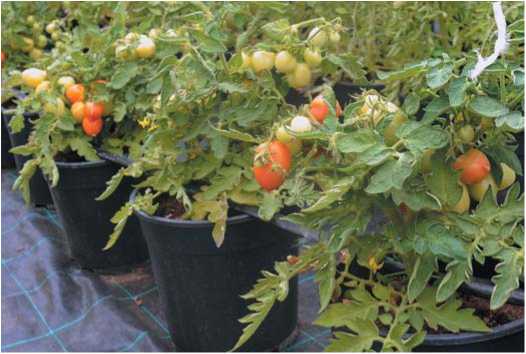
Рис.1.Гибриды томата F 1 со штамбовым типом куста
Fig.1.Hybrids oftomato F 1 with shtambovy type ofbush
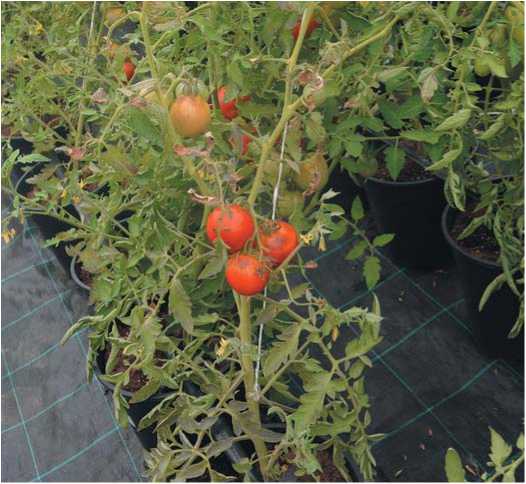
Рис.2.Гибриды томата F 1 с индетерминантным типом куста
У всех штамбовых растений окраска плода была монохроматической, как у исходного сорта Красавец (рис.3). Все индетерминантные растения имели плоды с окраской как у сорта Сибирский тигр (рис.4).
Результаты молекулярного анализа штамбовых гибридов показал наличие устойчивости к кладоспориозу и фузариозу у всех растений, обусловленные наличием доминантных аллелей генов Cf-19 и I-2 .
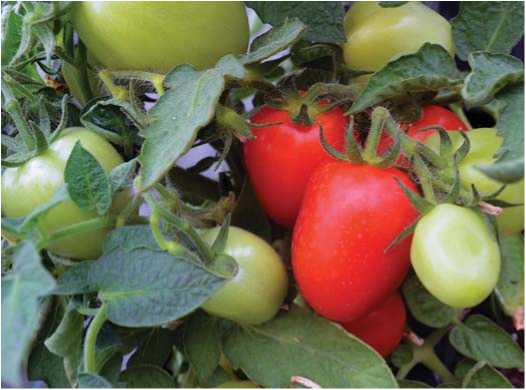
Рис.3.Окраска плодов у штамбовых гибридов F 1
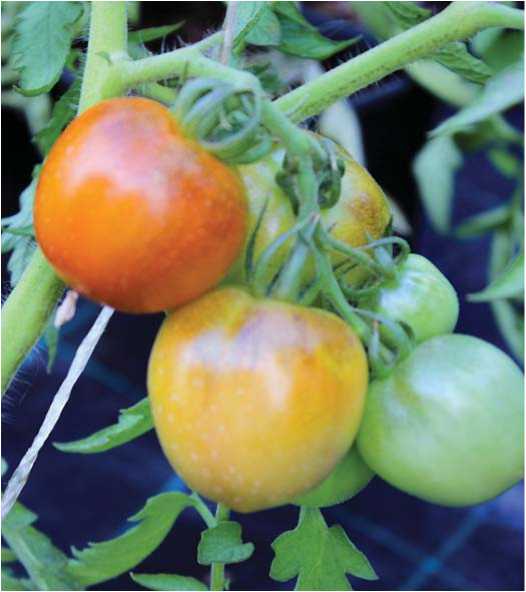
Рис.4.Окраска плодов у индетерминантных гибридов F 1
Таким образом, полученные гибридные формы томата сочетают признаки устойчивости к двум возбудителям грибных болезней и штамбовый тип куста. Эти формы планируется использовать в дальнейшей селекционной работе.
Заключение
Проведенное исследование позволило проанализировать аллельное разнообразие генов устойчивости к кладоспорио-зу и фузариозу томата в коллекции сортов и гибридов Мичуринского ГАУ. На основании молекулярного исследования были отобраны исходные формы для селекции. С их использованием получены гибриды, сочетающие в себе два гена устойчивости и другие ценные признаки.
В дальнейшем селекционная работа с использованием данных гибридов будет продолжена. Для создания штамбового типа томата с темной окраской плодов планируется получение гибридов второго поколения от наиболее перспективных форм F 1 c учетом данных молекулярного анализа.
Об авторах:
Иван Николаевич Шамшин – кандидат биологических наук, заведующий лабораторией молекулярно-генетического анализа плодовых растений, , Scopus ID 56708633300, Researcher ID AAZ-9047-2021, автор для переписки,
Ivan N. Shamshin – Cand. Sci. (Biology), Head of the laboratory
of the molecular and genetic analysis of fruit plants, , Scopus ID 56708633300, Researcher ID AAZ-9047-2021, Corresponding Author,
Ekaterina V. Grosheva – Laboratory Assistant of the laboratory of molecular genetic analysis of fruit plants, ,
Researcher ID ААА7122-2020.
Marina V. Maslova – Cand. Sci. (Agriculture),
Senior Researcher of Biofotonika laboratory, , Researcher ID E-4506-2015
Rufima M. Samoilova – Educational Master of the Department of horticulture, biotechnology and crop selection
Список литературы Создание новых форм томата с генами устойчивости к грибным болезням на основе маркерной селекции
- Litvinov S.S. [Phytosanitary problems in modern vegetable production]. Plant protection and quarantine. 2015; 4. (in Russ.)
- Seitbattalova A.I., Sadanov A.K., Shemshura O.N., Kaptagai R.Zh., Ismailova E.T. [The influence of pre-treatment of seeds with issop extract on the resistance of tomatoes to mushroom diseases in the field]. News of the National Academy of Sciences of the Republic of Kazakhstan series biology and medicine. 2017;5(233):222- 227. (in Russ.)
- Polyxenova V.D. [Induced resistance of plants to pathogens and abiotic stress factors: on the example of tomato]. Bulletin of the Belarusian State University. 2009;(1):48-60. (in Russ.)
- Iida Y., van ‘t Hof P., Beenen H., Mesarich C., Kubota M., Stergiopoulos I., de Wit P. J. Novel mutations detected in avirulence genes overcoming tomato Cf resistance genes in isolates of a Japanese population of Cladosporium fulvum. PloS one. 2015;10(4). https://doi.org/10.1371/journal.pone.0123271
- Thomas C.M., Jones D.A., Parniske M., Harrison K., Balint-Kurti P. ., Hatzixanthis K., Jones J.D. Characterization of the tomato Cf-4 gene for resistance to Cladosporium fulvum identifies sequences that determine recognitional specificity in Cf-4 and Cf-9. The Plant Cell. 1997;9(12):2209-2224. https://doi.org/10.1105/tpc.9.12.2209.
- Chai X., Xu X., Wang D., Xue D., Li J. Mapping and candidate gene screening of Cladosporium fulvum resistance gene Cf-12 in tomato (Solanum lycopersicum) by high-throughput sequencing. Plant Breeding 2020;139(5):977-987. https://doi.org/10.1111/pbr.12852
- Zhang D., Bao Y., Sun Y., Yang H., Zhao T., Li H., Xu X. Comparative transcriptome analysis reveals the response mechanism of Cf-16-mediated resistance to Cladosporium fulvum infection in tomato. BMC plant biology. 2020;20(1):1-16. https://doi.org/10.1186/s12870-020-2245-5
- Liu G., Liu J., Zhang C., You X., Zhao T., Jiang J., Xu X. Physiological and RNAseq analyses provide insights into the response mechanism of the Cf-10-mediated resistance to Cladosporium fulvum infection in tomato. Plant molecular biology. 2018;96(4):403-416. https://doi.org/10.1007/s11103-018-0706-0.
- Kruijt M., Brandwagt B.F., De Wit P.J. Rearrangements in the Cf-9 disease resistance gene cluster of wild tomato have resulted in three genes that mediate Avr9 responsiveness. Genetics. 2004;168(3):1655-1663. https://doi.org/10.1534/genetics.104.028985.
- Jones D.A., Dickinson M.J., Balint-Kurti P.J., Dixon M.S., Jones J.D.G. Two complex resistance loci revealed in tomato by classical and RFLP mapping of the Cf-2, Cf-4, Cf-5, and Cf-9 genes for resistance to Cladosporium fulvum. Molecular Plant Microbe Interactions. 1993;6(3):348-357.
- Dixon M.S., Jones D.A., Keddie J.S., Thomas C.M., Harrison K., Jones J.D. The tomato Cf-2 disease resistance locus comprises two functional genes encoding leucine-rich repeat proteins. Cell. 1996;84(3):451-459. https://doi.org/10.1016/S0092-8674(00)81290-8.
- Xue D.Q., Chen X.L., Zhang H., Chai X.F., Jiang J.B., Xu X.Y., Li J.F. Transcriptome analysis of the Cf-12-mediated resistance response to Cladosporium fulvum in tomato. Frontiers in plant science. 2017;(7):2012. https://doi.org/10.3389/fpls.2016.02012.
- Zhao T., Liu W., Zhao Z., Yang H., Bao Y., Zhang D., Xu X. Transcriptome profiling reveals the response process of tomato carrying Cf-19 and Cladosporium fulvum interaction. BMC plant biology. 2019;19(1):1-12. https://doi.org/10.1186/s12870-019-2150-y.
- Jordatilde D.O., de Almeida C.M.A., Malafaia C.B., da Silva M.L.R.B., dos Santos Correia M.T., de Menezes Lima V.L., da Silva, M.V. Identification of races 1, 2 and 3 of Fusarium oxysporum f. sp. lycopersici by molecular markers. African Journal of Microbiology Research. 2013;7(20):2324-2331. DOI10.5897/AJMR12.2234.
- Gonzalez-Cendales Y., Catanzariti A.M., Baker B., Mcgrath D.J., Jones D.A.. Identification of I-7 expands the repertoire of genes for resistance to Fusarium wilt in tomato to three resistance gene classes. Molecular Plant Pathology. 2016;17(3):448-463. DOI10.1111/mpp.12294
- Eroshevskaya A.S., Egorova A.A., Milyukova N.A., Pyrsikov A.S. Molecular-genetic analysis of tomato hybrids F1 on resistance to fuzariosis. Potatoes and vegetables. 2021;(5):37-40. (In Russ.)
- Takken F., Rep M. The arms race between tomato and Fusarium oxysporum. Molecular plant pathology. 2010;11(2):309-314.
- Catanzariti A.M., Lim G.T., Jones D.A. The tomato I-3 gene: a novel gene for resistance to Fusarium wilt disease. New Phytologist. 2015;207(1):106-118. https://doi.org/10.1111/nph.13348.
- Gardner R.G. Mountain Spring'tomato; NC8276 and NC84173 tomato breeding lines. HortScience. 1992;27(11);1233-1234.
- El Mohtar C.A., Atamia H.S., Dagher R.B., Abou-Jawdah Y., Salus M.S., Maxwell D.P. Marker-assisted selection of tomato genotypes with the I-2 gene for resistance to Fusarium oxysporum f. sp. lycopersici race 2. Plant disease. 2007;91(6):758-762. https://doi.org/10.1094/PDIS-91-6-0758.
- Simsek D., Pinar H., Mutlu N. Development of Fusarium oxysporum f. Sp. Lycopersici (FOL) and Fusarium oxysporum f. Sp. Radicis lycopersici (FORL) resistant tomato lines with the aid of marker assisted selection. Current Trends in Natural Sciences. 2018;7(13):281-285.
- Pidigam S., Thuraga V., Munnam S.B., Amarapalli G., Kuraba G., Pandravada S.R., Sudini H.K. Genetic diversity, population structure and validation of SSR markers linked to Sw-5 and I-2 genes in tomato germplasm. Physiology and Molecular Biology of Plants. 2021;1-16. https://doi.org/10.1007/s12298-021-01037-8.
- Adzhieva V.F., Grushetskaya Z.E., Malyshev S.V., Nekrashevich N.A., Babak O.G., Kilchevsky A.V. [Creation of a complex of DNA markers for tomato genes that determine the content of carotenoids and resistance to diseases and pests]. II International. научн. - практ. conf. "Modern trends in the selection and seed production of vegetable crops. Traditions and perspectives. " Moscow, Russia. August 2-4, 2010; p. 47. (in Russ.)
- Yu S.C., Zou Y.M. A co-dominant molecular marker of Fusarium wilt resistance gene I-2 derived from gene sequence in tomato. Yi Chuan= Hereditas. 2008;30(7):926-932. https://doi.org/10.3724/sp.j.1005.2008.00926.
- Arens P., Mansilla C., Deinum D., Cavellini L., Moretti A., Rolland S., Vosman B. Development and evaluation of robust molecular markers linked to disease resistance in tomato for distinctness, uniformity and stability testing. Theoretical and applied genetics. 2010;120(3):655-664. https://doi.org/10.1007/s00122-009-1183-2.
- Zhao T., Jiang J., Liu G., He S., Zhang H., Chen X., Xu X. Mapping and candidate gene screening of tomato Cladosporium fulvum-resistant gene Cf-19, based on highthroughput sequencing technology. BMC plant biology. 2016;16(1):1-10. https://doi.org/10.1186/s12870-016-0737-0.
- Nevamea A. Y. M., Xiaa L., Wentinga Z., Nchongbohc C. G., Wenhua L., Hasand M. M., Longtinga S. Validation of some disease-resistance molecular markers associated with multiple diseases in tomato for marker-assisted selection program. Scienceasia. 2020;46(1):19-29. https://doi.org/10.2306/scienceasia1513-1874.2020.006.
- Shamshin I.N., Maslova M.V., Gryazneva Yu.V. [Analysis of genetic collection of tomato varieties and hybrid forms by resistance to cladosporiosis using DNA markers]. Proceedings on applied botany, genetics and breeding. 2019;180(3):63-70. https://doi.org/10.30901/2227-8834-2019-3-63-70 (in Russ.)

